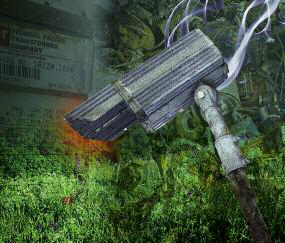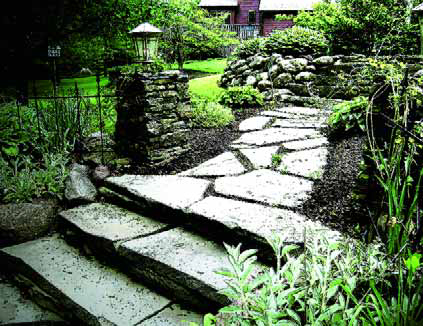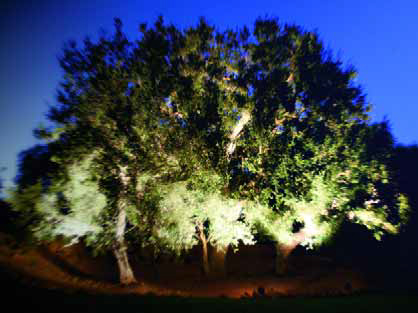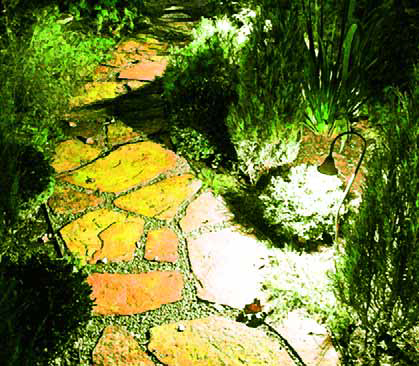techniques
Call it human nature, free-market economics, the profit motive or whatever – the fact of the matter is that too many landscape lighting installers rely on low-cost products made with low-grade materials. Obviously, they do it to cut down costs either to squeeze more profit out of each job or to bring the price down to the level required to get clients to sign on the dotted line. So rather than reduce the number of fixtures used on a project or even turn down a project altogether, they’re clearly willing to win a job by using equipment that has no chance of lasting more than a
Stairs, to borrow an immortal phrase from Rodney Dangerfield, “get no respect.” In fact, if my observations through the years tell me anything, the stairs set in far too many landscapes are strictly utilitarian objects – no more than a means of getting from one level of a space to another. The only thought that seems to go into some of them has to do with avoiding trip hazards, which is important but hardly the most aesthetically oriented of approaches to take. In my experience, when stairs are considered in deliberate and creative ways, they can become
As I see it, successful landscape lighting is a two-part process: First, the designer applies aesthetic principles that create the art, then he or she supports that artistic vision with scientific and technological savvy. One without the other doesn’t work: You can’t effectively practice the art until you’ve mastered the science. In my 17 years as a lighting designer, I’ve encountered lots of professionals who have the artistic part of the equation down pat but fall well short when it comes to working with electricity. The plain fact is, you can use the best fixtures in the world and understand the aesthetic issues like the back of your hand, but if you can’t consistently deliver power to those fixtures at correct, reliable voltages, the overall system will not perform properly and has the potential to become a maintenance nightmare. There’s no way a single article can bring anyone up to speed with all of the issues involved in the science lighting. Instead, my intention here is to introduce watershapers to a basic, commonsense approach to laying out low-voltage, halogen lighting systems, the goal being to enable you to converse intelligently and persuasively with lighting designers in the interest of helping
Although the eye is commonly drawn to structures and other architecture elements found in any given exterior environment, very often it is trees that serve as visual anchors in modern landscapes. Indeed, they tend to be the largest objects on most properties and will often become focal points even in settings in which they might have started out in supporting roles. This dominance or even potential for dominance is why, as a lighting designer, I believe that trees should always receive
Those of us who are designers and builders of full-scale outdoor environments (you know who you are) face a distinct challenge: In our work for our clients, we are expected to provide the outline and details for a huge range of project elements, from watershapes and patios to plantings and walkways and more. That list, at least so far as clients are concerned, also includes appropriate lighting, but that is not always something on which we focus. Indeed, lighting design is seen as a specialty even by those who tackle almost every other project feature - and there's no problem with that unless
Those of us who are designers and builders of full-scale outdoor environments (you know who you are) face a distinct challenge: In our work for our clients, we are expected to provide the outline and details for a huge range of project elements, from watershapes and patios to plantings and walkways and more. That list, at least so far as clients are concerned, also includes appropriate lighting, but that is not always something on which we focus. Indeed, lighting design is seen as a specialty even by those who tackle almost every other project feature - and there's no problem with that unless
Landscape-lighting design is my obsession: Not only do I make my living at it, but it has also reached a point where it informs the way I look at every landscape and watershape I encounter - whether I'm working on those spaces or not. When I visit almost any site - and particularly when I spot an interesting garden - I almost instantaneously begin formulating ideas about how I'd light it. That's a good thing, because it keeps me professionally sharp, but it's also a bit addictive: Once you start visualizing how dynamic particular places can be when properly lit, you get hooked on the mental exercise and start enjoying the intensity of the experience. In the beginning, of course, those clear visualizations
Landscape-lighting design is my obsession: Not only do I make my living at it, but it has also reached a point where it informs the way I look at every landscape and watershape I encounter - whether I'm working on those spaces or not. When I visit almost any site - and particularly when I spot an interesting garden - I almost instantaneously begin formulating ideas about how I'd light it. That's a good thing, because it keeps me professionally sharp, but it's also a bit addictive: Once you start visualizing how dynamic particular places can be when properly lit, you get hooked on the mental exercise and start enjoying the intensity of the experience. In the beginning, of course, those clear visualizations
When we work in public settings, the basic demand on lighting designers is for straightforward fixture layouts capable of providing enduring effects and requiring minimal ongoing attention. That doesn't sound particularly exciting - and it's not, unless the lighting designer uses it as a baseline and reaches above and beyond.Parks, plazas, resorts and historical sites (among many others) are all spaces that really should come alive at night, but their lighting designs often run counter to that vitality by being so utilitarian that they spark boredom rather than energy. It's easy to understand why this happens: Because such spaces play host to high levels of traffic and often multiple uses, they demand lighting treatments that
When we work in public settings, the basic demand on lighting designers is for straightforward fixture layouts capable of providing enduring effects and requiring minimal ongoing attention. That doesn't sound particularly exciting - and it's not, unless the lighting designer uses it as a baseline and reaches above and beyond.Parks, plazas, resorts and historical sites (among many others) are all spaces that really should come alive at night, but their lighting designs often run counter to that vitality by being so utilitarian that they spark boredom rather than energy. It's easy to understand why this happens: Because such spaces play host to high levels of traffic and often multiple uses, they demand lighting treatments that



















